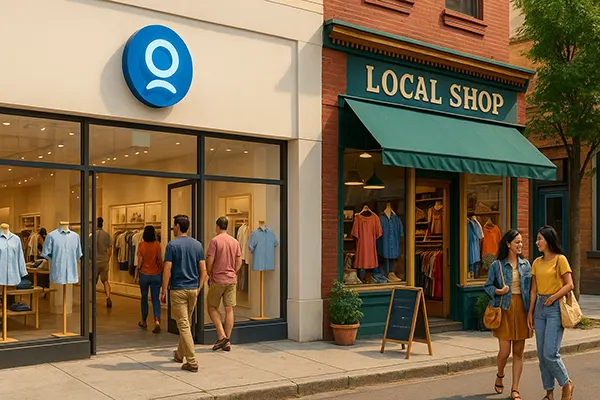
How Branding Has Evolved Since 2023: From Global to Local
The post-2023 business landscape has dramatically reshaped the principles of brand development. While global identity once reigned supreme, today’s market demands deeper regional relevance and cultural authenticity. Economic volatility, shifts in consumer behaviour, and increasing technological access have all contributed to a more decentralised approach to brand creation.
Shifting Priorities in Brand Strategy
In the years following 2023, brands have been forced to rethink their positioning. The previous dominance of standardised global campaigns has given way to demand for authentic local narratives. This change is largely driven by a saturation of digital content and growing scepticism toward uniform corporate messaging.
Consumers now seek relevance—brands that speak their language, understand their daily realities, and reflect their social values. This evolution isn’t just semantic. It impacts product design, pricing, customer support, and communication channels. A brand that thrives today is often one that understands regional nuances without losing its broader vision.
Companies like Coca-Cola and McDonald’s, which once exemplified global standardisation, have pivoted to localised campaigns in key markets. These initiatives often involve local influencers, community-led events, and bespoke product variations—proving that customisation is not just desirable but necessary for long-term engagement.
The Decline of One-Size-Fits-All Branding
By mid-2025, data has shown a stark decline in the effectiveness of universal branding efforts. Campaigns using identical content across various countries perform worse in terms of conversion and brand affinity compared to their localised counterparts. Algorithms and customer feedback loops now punish tone-deaf or culturally mismatched content.
This has placed pressure on marketing teams to move beyond translation. Successful localisation involves storytelling that resonates with local emotions, seasonal trends, and regional humour. It demands that brands invest in local research and often collaborate with domestic creative talent.
Even large-scale branding efforts—like rebrands or product launches—are now split into regional variants, offering a blend of global consistency and local adaptation. This has become not only a trend but a benchmark for brand relevance in the modern era.
Technological Tools Powering Local Adaptation
The rise of AI, CRM platforms, and advanced analytics has made localised branding both scalable and efficient. Brands no longer need to rely solely on massive field teams; real-time data allows for dynamic content changes, audience testing, and segmentation on the fly. Tools like customer journey mapping and predictive modelling have refined how brands interpret regional preferences.
Geolocation targeting, language-based personalisation, and localised social media strategies enable brands to deploy multi-layered campaigns with precision. These technologies also help brands track performance by region, allowing quick pivots in strategy based on local response.
Furthermore, AI-assisted design and copywriting tools now empower marketers to craft region-specific messages while maintaining brand voice and tone. However, the key is human oversight—ensuring that automation supports cultural accuracy rather than replacing it.
Personalisation at Scale: Not Just for Tech Giants
Previously reserved for tech-native companies, scalable personalisation has become accessible to medium and even small enterprises. SaaS tools offer modular approaches to CRM, automation, and content management that allow for market segmentation based on geography, behaviour, and psychographics.
This democratisation of technology has levelled the playing field. A local business in Poland can now launch a campaign as nuanced and data-driven as a national brand. What matters most is the quality of insights and the willingness to adapt rather than mimic.
Case studies from 2024–2025 reveal that regional campaigns backed by modest budgets outperform national ones if they align more closely with the community’s culture and challenges. ROI no longer correlates strictly with spend but with contextual relevance.

Consumer Values and Cultural Sensitivity
Another reason for the shift toward localised branding is the transformation of consumer values. Gen Z and younger Millennials are particularly sensitive to inclusivity, environmental responsibility, and social justice. These audiences favour brands that act locally, support community causes, and reflect shared beliefs rather than preach corporate slogans.
Social media has empowered individuals to challenge disingenuous campaigns, making brand authenticity non-negotiable. Missteps are no longer contained—they become global incidents within hours. Brands must therefore engage with cultural context proactively rather than reactively.
Brands that succeed in 2025 are those that not only ‘market’ to a demographic but ‘belong’ within it. This means hiring locally, supporting grassroots initiatives, and aligning campaigns with regional causes that matter. Corporate social responsibility has transformed from a strategy to an expectation.
Case Examples of Cultural Missteps and Wins
In 2024, a major apparel brand faced backlash in Southeast Asia for using imagery deemed disrespectful to local religious customs. The campaign was quickly withdrawn, but the damage to trust was significant. This highlights the risk of ignoring cultural intelligence in brand creation.
Conversely, a European cosmetics brand succeeded in India by reformulating its product line to cater to local skin tones and climates, while partnering with regional dermatologists. Their transparent collaboration was praised and led to a 35% increase in sales over two quarters.
These examples reinforce the principle that cultural awareness isn’t a luxury—it’s a foundational aspect of branding in a world that values diversity, identity, and community engagement.

